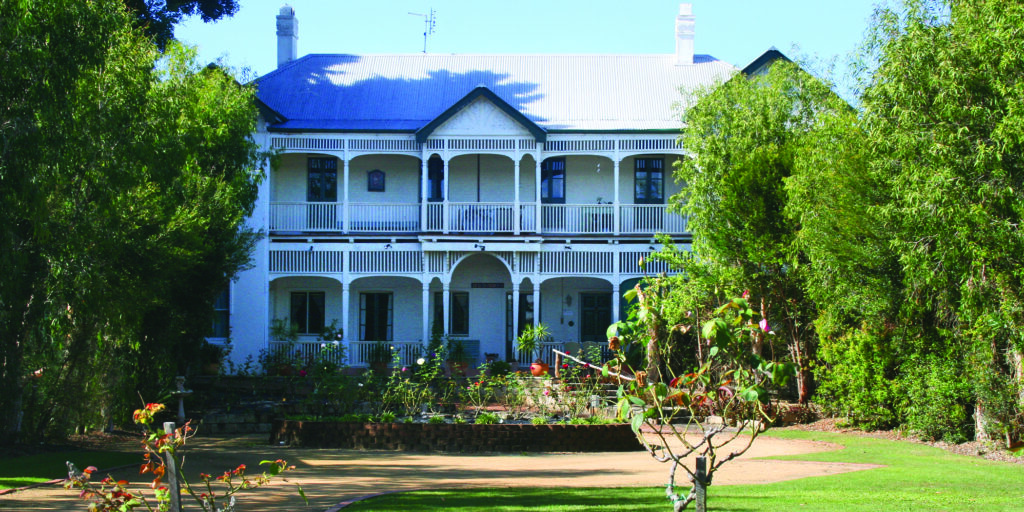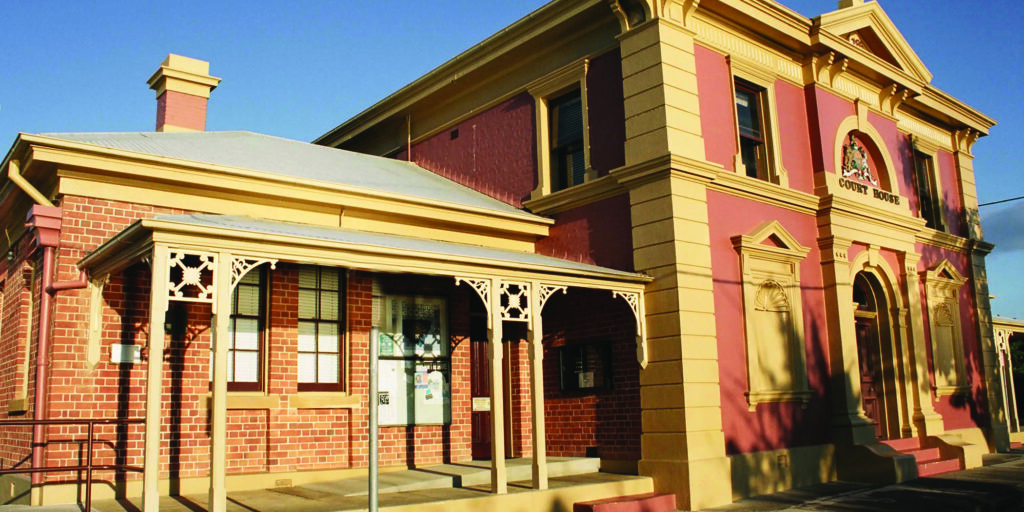Maclean Heritage Trail
Discover Macleann’s buildings of historical significance on this walking and cycling trail around Australia’s Scottish town.

This building is an example of late Victorian construction and detailing. Woolitji House was built in 1882 at a cost of £1,930.
Built in 1867, this is the oldest private building in Maclean. It has served as a hotel, guest house, residence, art gallery, restaurant and B&B. The building is now privately owned. It has been repainted, restored and redecorated to its former glory.
Built in 1886 on the eastern side of Maclean Hospital. It was kept as the operating theatre until the new hospital opened in 1955. It was saved from demolition and restored through a grant from the Heritage Commission.
The school and residence was built in 1902/1903. Many extensions and additions have been made over the years. By 1951 it had become an intermediate high school. In 1960 the secondary department moved into a new building in Wombah Street.
Built in 1890, this church has a commanding view overlooking Maclean. The tower stands at over 18m tall. An impressive feature of the church interior is the massive roof beams. Like other historic buildings in Maclean, the church was built of sandstone from the neighbouring quarry. Riverboats brought residents from Grafton
to Maclean for the opening of the church in 1893
Built in 1882, the Brewery was constructed from the same sandstone as the Stone Cottage and the Catholic Church. It operated as a brewery under various owners until it was converted into two residences in 1915. Extensive renovations were made during the 1970s.

he cottage was built in 1886 from sandstone quarried on site and local timber. The cottage is now a museum and is arranged as a replica of a turn of the century Maclean home. The Stone Cottage museum and adjacent Bicentennial Museum (1988) are open Tuesdays 9am-12pm, and Wednesday and Saturday 1pm –4pm.
Built in 1890, the Methodist Church is the second oldest church in Maclean. It replaces a weatherboard structure built in 1871. The church was extended in 1908 and the entrance porch, whichhad been at the far end, is now central.
This church was built in 1864 on one of the first blocks offered for public sale within the town. It’s the oldest church in continuous use in the Clarence Valley. Presbyterianism began in Scotland in the 16th Century and became the national religion.In 1843 an off-shoot seeking to be ‘free’ from state interference formed and both churches were built in Maclean by the early Scottish settlers.
The Baptist Church was built in 1907 and sits beside the localWar Memorial (1930).The timber was provided by dismantlinga disused local fish cannery. Rev ‘Jock’ Garden arrived in 1909 -the third Minister to serve. He gained the rights to operate the publican’s booth at Maclean Show as a ‘temperance’ booth. Rev.Garden went on to become a prominent parliamentarian.
Built in 1906, this building was the headquarters of HarwoodShire Council that represented people in the rural areas neighbouring Maclean. In 1957 the councils amalgamated to form the Maclean Shire Council, which then merged with neighbouring Councils in 2004 to form Clarence Valley Council.
Built in 1901, this hall was built as a drill hall for the Scottish Rifles,a volunteer company of men of Scottish descent (disbanded in 1911). The Salvation Army purchased the hall in 1932, having been active in Maclean since 1887.
Built in 1903, Maclean Civic Hall was originally called the ‘Mechanics Institute/School of Arts’. For many years it served as the only local hall with a stage and was used for dances, concerts,exhibitions, political and public meetings. The original façade was modified in 1984 to match the old council chambers, a design that was highly controversial.
Maclean Post Office was built in 1893. Contractor Patrick Berecry was almost sent broke during the construction as he had to replace faulty brickwork. But Berecry’s workmanship has stood the test of time. The original balcony was removed in 1958. The interior still contains original fine cedar.
Built in 1895, Maclean Police Station was designed with windows to complement the neighbouring post office and court house. The original stable and stalls were demolished in 1936.
Built in 1891, Maclean Court House is arguably the finest buildingin Maclean. It was designed by the government architect and cost£2581. Cedar has been used extensively in the magistrates bench,furniture and joinery. The impressive façade features the coat of arms. Can you spot the VR (Victoria Regina) in the cast iron workon the verandas?

The above information was kindly supplied by The Scottish Shop, 201A River St, Maclean
Further details on the town’s history can be found in books published by the Macelan District Historical Society.

